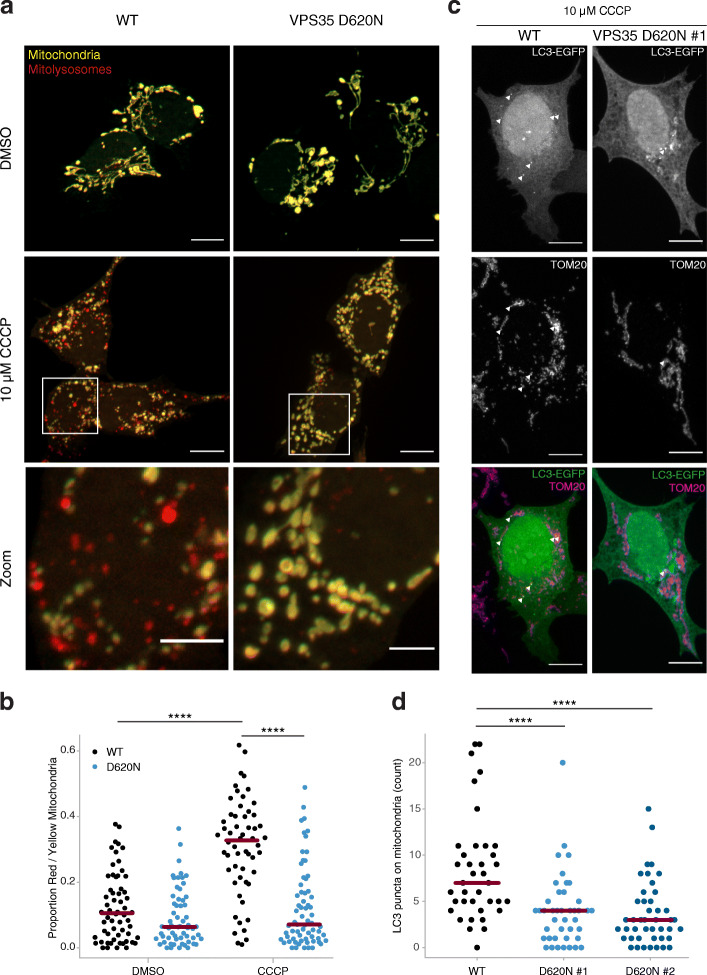Fig. 4.
VPS35D620N cells display impaired mitophagy upon CCCP treatment. a Representative fluorescence images of WT (left panels) or VPS35D620N (right panels) cells stably expressing COX8-EGFP-mCherry treated with DMSO (upper panels) or 10 μM CCCP (middle panels) for 24 h. The signal from the yellow particles originates from EGFP and mCherry and highlights cytoplasmic mitochondria. The red particles show quenched EGFP signal and normal mCherry signal, reflecting mitochondria transported into an acidic compartment (mitophagolysosome). Lower panels show zoomed-in images from the highlighted area in the middle panels. Scale bar, 10 μm, or 4 μm for zoomed images. b Quantification of yellow and red particles in (a) in WT and VPS35D620N cells treated with DMSO or 10 μM CCCP. Each dot represents the proportion of total yellow and red particles for one cell. Red lines show the median proportion per cell line per condition. Statistical analysis was performed using a beta regression. c Representative confocal images of WT (left panels) or VPS35D620N (clone 1, right panels) cells transiently overexpressing EGFP-LC3 (upper panel: white, lower panel: green) and stained for the mitochondrial protein TOM20 (middle panel: white, lower panel: magenta) treated with 10 μM CCCP for 6 h. Scale bar, 10 μm. d Quantification of EGFP-LC3 puncta colocalized with mitochondria in WT and VPS35D620N (clone 1 and 2) cells treated with 10 μM CCCP. Each dot represents one cell. Red lines show the median amount of EGFP-LC3 on mitochondria per cell line. Data analyzed using one-way ANOVA. ****P < 0.001

